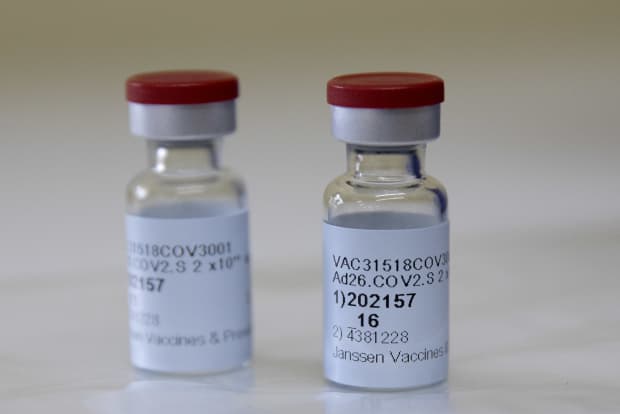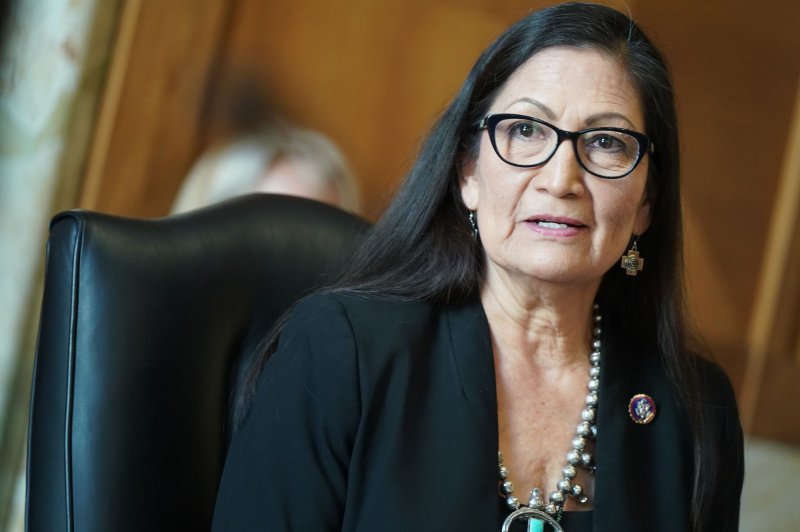Ivanka Trump's women's initiative branded a failure by US government auditors
/cloudfront-ap-southeast-2.images.arcpublishing.com/nzme/K4PBTICESE4F5TXAQ4GBQ5DDJA.jpg)
An initiative championed by Ivanka Trump has been branded a failure.
Photo / Getty Images news.com.au
1 Apr, 2021
By: Natalie Brown
The women's empowerment initiative championed by Ivanka Trump throughout her father's presidency has been branded a failure, in a damning new report by America's Government Accountability Office (GAO).
Donald Trump's 39-year-old eldest daughter, former senior adviser and "heir apparent" – who is supposedly working to "redeem" and "rebrand" herself as she sets her eyes on the White House – spent most of her time in Washington claiming to be working on behalf of women both at home and abroad.
The Women's Entrepreneurship and Economic Empowerment Act, which Ms Trump helped usher through Congress in 2018, was a legislative overhaul of programmes assisting small businesses run by women around the world.
Now, a review by officials at the GAO has found that programmes funded through the initiative were deeply flawed and hampered by poor oversight, never working out "an explicit definition" of who was eligible to receive US$265 million per year in aid.
While the mother-of-three didn't directly oversee the programme, she promoted her role in expanding federal aid programmes to target female entrepreneurs. In an early 2019 interview, she vowed to "rigorously track the execution and efficacy of the money that we were spending".
The women's empowerment initiative championed by Ivanka Trump throughout her father's presidency has been branded a failure, in a damning new report by America's Government Accountability Office (GAO).
Donald Trump's 39-year-old eldest daughter, former senior adviser and "heir apparent" – who is supposedly working to "redeem" and "rebrand" herself as she sets her eyes on the White House – spent most of her time in Washington claiming to be working on behalf of women both at home and abroad.
The Women's Entrepreneurship and Economic Empowerment Act, which Ms Trump helped usher through Congress in 2018, was a legislative overhaul of programmes assisting small businesses run by women around the world.
Now, a review by officials at the GAO has found that programmes funded through the initiative were deeply flawed and hampered by poor oversight, never working out "an explicit definition" of who was eligible to receive US$265 million per year in aid.
While the mother-of-three didn't directly oversee the programme, she promoted her role in expanding federal aid programmes to target female entrepreneurs. In an early 2019 interview, she vowed to "rigorously track the execution and efficacy of the money that we were spending".
/cloudfront-ap-southeast-2.images.arcpublishing.com/nzme/6QC36CCLSRFHMI4HTZZ5IGJCGI.jpg)
Donald Trump and daughter Ivanka Trump walk on the South Lawn of the White House. Photo / Getty Images
"(Ivanka) Trump's stump speech on the global conference circuit was anchored in stories about the legal and regulatory barriers many women face around the world in establishing their property rights and starting businesses, and she had a solution: W-GDP (Women's Global Development and Prosperity Initiative)," Ryan Heath wrote in an article for Politico.
"Launched weeks after President Trump signed the WEEE Act in early 2019, supporters of W-GDP saw it as a groundbreaking whole-of-government approach to female empowerment. Critics of W-GDP derided the work as too limited to make a real difference."
Supposedly, the programme's hope "was that poor women entrepreneurs would receive the financial kick start they needed to build a business". Half of the annual funds were required to go to women, the other half to the "very poor", with some overlap between the two groups expected.
But despite its intentions, and Ms Trump's claims of "rigorously" tracking the "execution and the efficacy of the money that we are spending", there were "extensive failures in both the targeting of the money, and the measurement of its impact", the GAO audit found.
The initiative "was unable to say what proportion of funds went to the very poor, and women-owned and managed businesses".
"Shockingly, the agency couldn't even define what actually constitutes a business owned and run by women, the GAO concluded," Heath wrote.
A senior Trump administration official who worked on W-GDP, speaking to Politico, attributed the issues to the initiative inheriting a "tangled mess of women's policy programmes in 2017".
"Everything was scattered with no real clear goal or purpose. That is not a good use of taxpayer dollars and doesn't help people anywhere," the former official said.
The report's release comes as rumours continue to swirl about Ms Trump's political future.
According to some, she plans to run for President herself in the not-too-distant future; others say that she could serve as Vice-President under her father if he were to win in 2024; that she aims to challenge Florida Republican Senator Marco Rubio in 2022 – although that path now seems to have been ruled out – or run for Florida governor.
"(Ivanka) Trump's stump speech on the global conference circuit was anchored in stories about the legal and regulatory barriers many women face around the world in establishing their property rights and starting businesses, and she had a solution: W-GDP (Women's Global Development and Prosperity Initiative)," Ryan Heath wrote in an article for Politico.
"Launched weeks after President Trump signed the WEEE Act in early 2019, supporters of W-GDP saw it as a groundbreaking whole-of-government approach to female empowerment. Critics of W-GDP derided the work as too limited to make a real difference."
Supposedly, the programme's hope "was that poor women entrepreneurs would receive the financial kick start they needed to build a business". Half of the annual funds were required to go to women, the other half to the "very poor", with some overlap between the two groups expected.
But despite its intentions, and Ms Trump's claims of "rigorously" tracking the "execution and the efficacy of the money that we are spending", there were "extensive failures in both the targeting of the money, and the measurement of its impact", the GAO audit found.
The initiative "was unable to say what proportion of funds went to the very poor, and women-owned and managed businesses".
"Shockingly, the agency couldn't even define what actually constitutes a business owned and run by women, the GAO concluded," Heath wrote.
A senior Trump administration official who worked on W-GDP, speaking to Politico, attributed the issues to the initiative inheriting a "tangled mess of women's policy programmes in 2017".
"Everything was scattered with no real clear goal or purpose. That is not a good use of taxpayer dollars and doesn't help people anywhere," the former official said.
The report's release comes as rumours continue to swirl about Ms Trump's political future.
According to some, she plans to run for President herself in the not-too-distant future; others say that she could serve as Vice-President under her father if he were to win in 2024; that she aims to challenge Florida Republican Senator Marco Rubio in 2022 – although that path now seems to have been ruled out – or run for Florida governor.
/cloudfront-ap-southeast-2.images.arcpublishing.com/nzme/GAD3MHF4FTDOMTY4Z4GNSARCB4.jpg)
Ivanka is Donald Trump's eldest daughter. Photo / Getty Images
US political commentator and author Spencer Critchley, a former communications consultant for Barack Obama's presidential campaigns, previously told news.com.au's Alexis Carey that Ms Trump's recent behaviour indicated she was seriously considering a political move.
He said some clues regarding her political ambitions include her adoption of "ostentatiously virtuous positions on non-controversial topics like motherhood or being kind to each other", ensuring she remains in the public eye, being "very carefully groomed and presented" in public and attending official state events during the Trump administration, such as the G20 summit in Japan in 2019.
But, attention was now turning to a string of "questionable" actions undertaken by Ms Trump before and during her time as adviser to the president, possibly threatening her future career path, he said.
"It seems clear with the hints she's dropped over the years that she thinks (running for office) is the logical next step," he told news.com.au.
"But Ivanka is obviously completely unqualified in terms of her experience but also in terms of her character – in many ways she's similar to her father and she has certainly had some very shady dealings.
"Ivanka, from the beginning and even before the Trump administration, had been involved in very questionable stuff."
US political commentator and author Spencer Critchley, a former communications consultant for Barack Obama's presidential campaigns, previously told news.com.au's Alexis Carey that Ms Trump's recent behaviour indicated she was seriously considering a political move.
He said some clues regarding her political ambitions include her adoption of "ostentatiously virtuous positions on non-controversial topics like motherhood or being kind to each other", ensuring she remains in the public eye, being "very carefully groomed and presented" in public and attending official state events during the Trump administration, such as the G20 summit in Japan in 2019.
But, attention was now turning to a string of "questionable" actions undertaken by Ms Trump before and during her time as adviser to the president, possibly threatening her future career path, he said.
"It seems clear with the hints she's dropped over the years that she thinks (running for office) is the logical next step," he told news.com.au.
"But Ivanka is obviously completely unqualified in terms of her experience but also in terms of her character – in many ways she's similar to her father and she has certainly had some very shady dealings.
"Ivanka, from the beginning and even before the Trump administration, had been involved in very questionable stuff."







